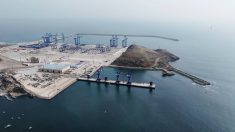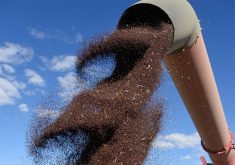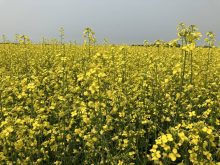SASKATOON — Urea fertilizer prices have been on a steady climb since the start of the year, says an analyst.
The price in New Orleans was about US$410 per tonne as of April 10, which is 25 per cent higher than it was on Jan. 1.
That is bad news for farmers in Western Canada.
Read Also

Fertilizer method’s link to emissions studied
A researcher says others studying greenhouse gas emissions aren’t considering how the loss of nitrogen into the atmosphere correlates with fertilizer application or if there is an impact to yield.
Nitrogen fertilizer is the most expensive input for spring wheat growers in Saskatchewan’s dark brown and black soil zones, according to Saskatchewan Agriculture’s Crop Planning Guide 2025.
It is the second most costly input behind seed for canola growers in those two zones.
Josh Linville, vice president of fertilizer with StoneX, said the main reason urea values have been on the rise is China’s absence from the market.
China normally exports five to 5.5 million tonnes of urea per year. Total exports in 2024 were a mere 266,000 tonnes.
That is about five million tonnes missing from a global export market of 50 to 55 million tonnes.
China’s exports for the first two months of 2025 combined was a paltry 4,052 tonnes.
Linville said the country began restricting exports in 2021-22 when prices soared, because it wanted to bolster domestic supplies and keep prices in check for its farmers.
Those restrictions have remained in place ever since.
“It’s leaving a gaping hole in supplies,” he said.
The European Union’s faltering production is another factor. Operating rates in the region are about 75 per cent of normal due to high natural gas prices caused by the explosion of the Nord Stream pipelines and reduced Russian gas transit through Ukraine.
That is slashing three to 3.5 million tonnes out of global supplies.
“Just between those two countries alone that is a major loss of supply,” said Linville.
And then there’s Iran, whose plants were offline for seven to eight weeks. The country lost 750,000 to one million tonnes of production during that time.
Those supply constraints are all happening in an environment of strong nitrogen fertilizer demand.
U.S. farmers intend to plant 95.3 million acres of corn, a crop that is a big user of nitrogen fertilizer. That is an extra 4.7 million acres compared to last year.
Other factors include “extremely tight” UAN supplies, which is pushing some growers to substitute urea.
Linville has spoken to retailers who say they won’t be able to access any supplies until June that weren’t pre-ordered, which explains why UAN prices are up 40 per cent since the start of the year.
And then of course there are U.S. President Donald Trump’s reciprocal tariffs announced on April 2, which caused urea prices to immediately jump by $30 to $40 per tonne the following morning.
The U.S. imports about 5.15 million tonnes of urea per year from many of the countries on Trump’s tariff list.
Trump has since paused his reciprocal tariffs for 90 days, but that did not result in a price drop for urea. The market appears to be building in a risk premium.
Linville said many farmers in the U.S. and Canada have not yet purchased all their spring nitrogen fertilizer needs.
He has spoken to a few big operations that haven’t bought one pound of their needs in hopes that prices will fall. Those growers are likely going to regret that decision.
“It’s going to hurt,” said Linville.


















